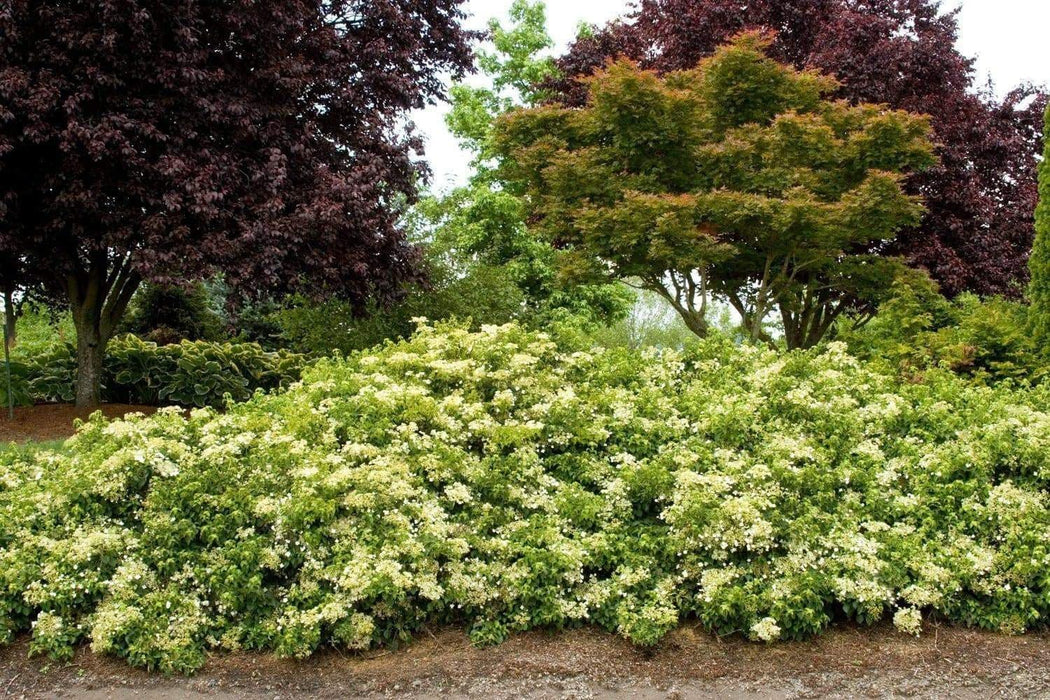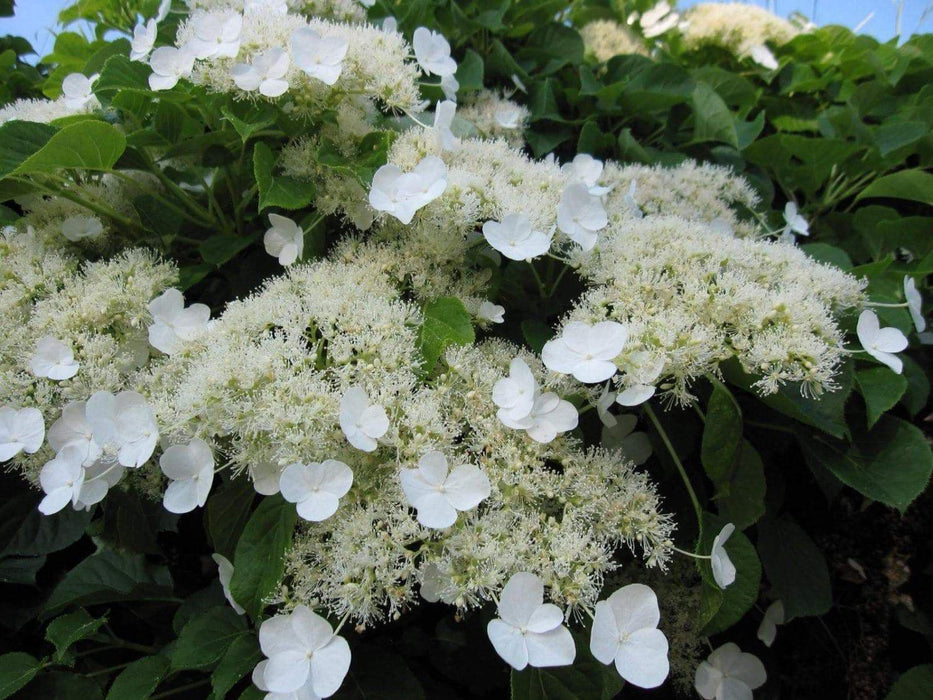
Climbing Hydrangea VINE-PERENNIAL FLOWERS Seeds,
Most orders are processed by the next day
Select your desired size and/or color from the available options.
Climbing Hydrangea Hydrangea anomala Petiolaris
A superb flowering clinging vine. Wyman and Dirr agree that it is one of the best; may be slow to establish, but it's reliable once it does. The bark is cinnamon-brown and exfoliating, the white summer flowers are in flat-topped clusters to 10" and the beautiful dark green leaves are very attractive. It has an unusual habit for a vine, the stem climbs vertically with holdfasts and then branches grow horizontally from the main stem.
You don't see climbing hydrangeas as often as the shrub types, but it is one of the more spectacular members of the hydrangea family. A full-grown climbing hydrangea vine may be up to 75 feet tall and it is covered with attractive, heart-shaped leaves throughout spring and summer. The leaves fall in autumn, revealing a showy, reddish-brown, exfoliating bark. Fragrant, white flowers bloom in 6- to 8-inch clusters in late spring and summer. Climbing hydrangea is hardy in U.S. Department of Agriculture plant hardiness zones 5
Growing Info:
Scarification: none required.
Stratification: none required.
Germination: surface sow and keep moist, tamp the soil.
Site and Support
Climbing hydrangea grows in full sun or partial shade. The plant isn't particular about the soil as long as it is well-drained and not too alkaline. The leaves turn yellow when the pH is too high. Working powdered sulfur into the soil corrects the problem. You can leave climbing hydrangea to run along the ground as a ground cover, but it looks
its best when itâs climbing. Trees and walls make good supports. Trellises must be sturdy to support the massive vines. The vines have strong tendrils that form a firm attachment to almost any type of structure. Don't grow the vine against clapboard walls because the tendrils can pull them loose, and avoid walls that need periodic maintenance because the vines don't detach easily. Climbing hydrangea is a good replacement vine for English ivy (Hedera helix), which is an invasive species in many parts of the country.
Planting
You can plant climbing hydrangea in spring or fall. Make sure the plant sits in the ground at the same level as it did in the container. Water generously after planting but don't fertilize until the following spring. It can take newly transplanted climbing hydrangea vines a year or two to become established, so don't give up on them too soon. Seeds germinate readily but take several years to put on substantial growth. The vines grow quickly once established but it may be three to five years before you see flowers.
Watering and Fertilizing
Climbing hydrangeas need 1 inch of water a week, either from rainfall or supplemental watering. During hot summers they may need watering more often. Keep the soil moist, but don't water so often the soil becomes mushy or soggy. A 2-inch layer of compost in spring provides enough nutrients to support the plant all season. You may be able to improve the performance with a light monthly side dressing or foliar spray.
Pruning
Climbing hydrangea is an informal, three-dimensional vine that often has side shoots growing in several directions. This is natural, and part of the charm of the plant. The vines don't need routine pruning except to correct problems. The brittle stems break and crack easily, and you should remove damaged parts promptly to prevent disease. Vines that are allowed to grow beyond their support become top-heavy and may pull away from the support or break. Trim them back in summer, after flowering.
Detailed Listing For
- Botanical Name:
- Hydrangea anomala Petiolaris
- Family:SAXIFRAGACEAE
- Genus:Hydrangea
- Species:anomala
- Cultivar:Petiolaris
- Common Name:Climbing Hydrangea
- Purity:98%
- Collection Locale:Ohio
- Minimum Hardiness Zone: 5
Select your desired size and color from the available option
LET OUR CUSTOMER SPEAK FOR US

![[Seeds] - Caribbeangardenseed](http://caribbeangardenseed.com/cdn/shop/files/gift-card-gift-card-1_1024x1024_dfa857db-9150-4315-a362-7f0bb3fb9c47_60x28.png?v=1703978838)

